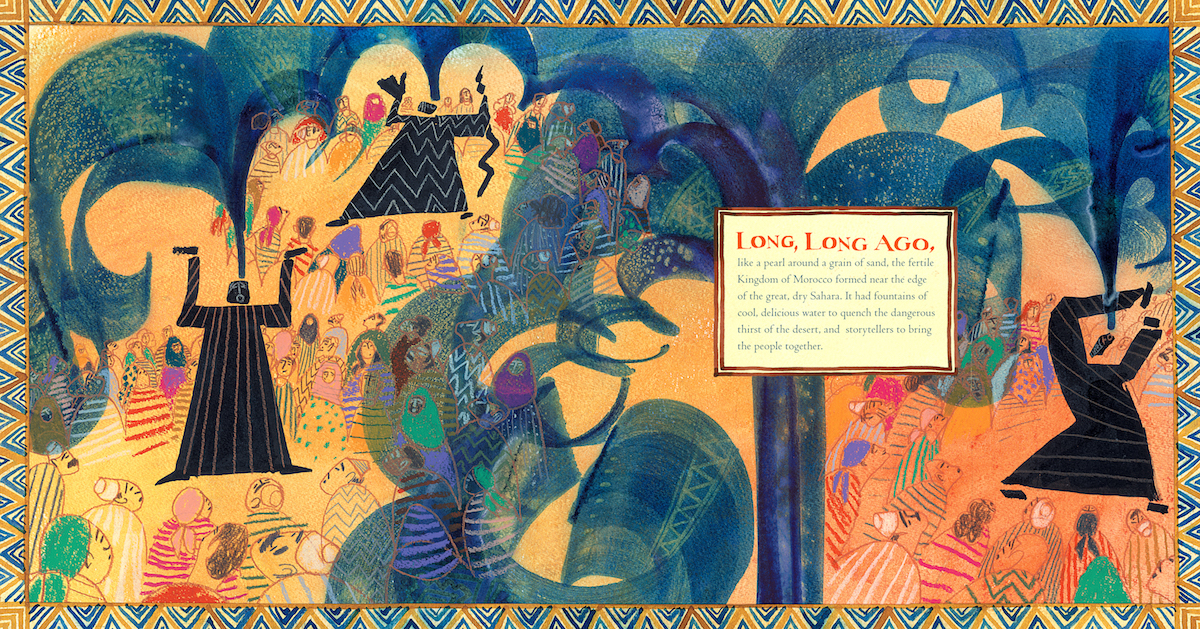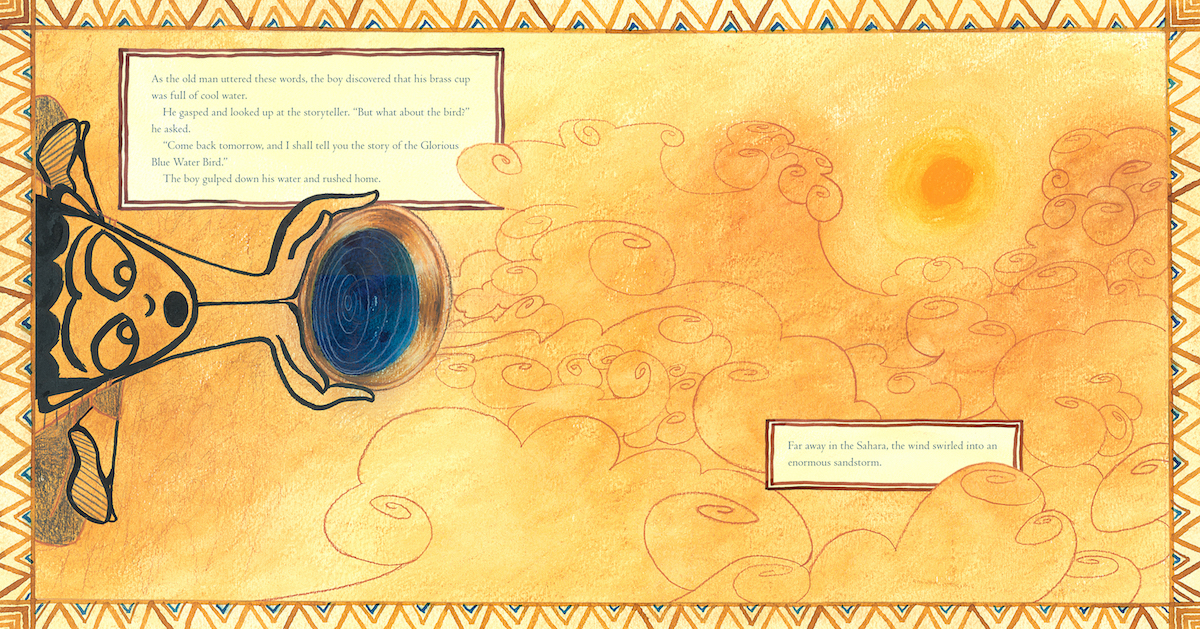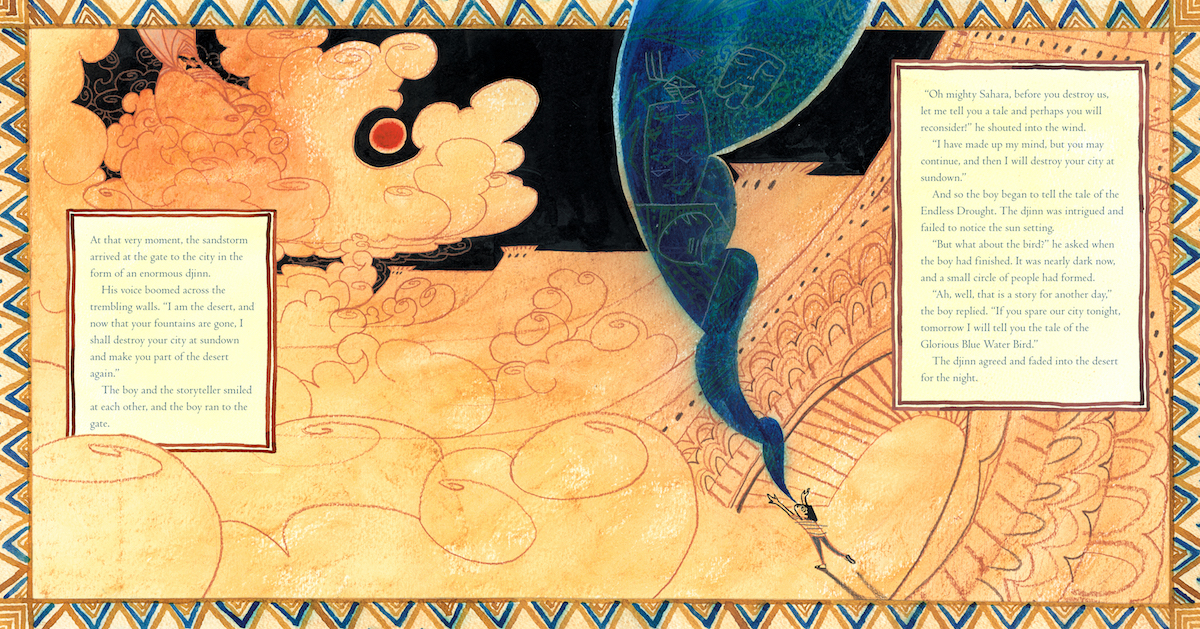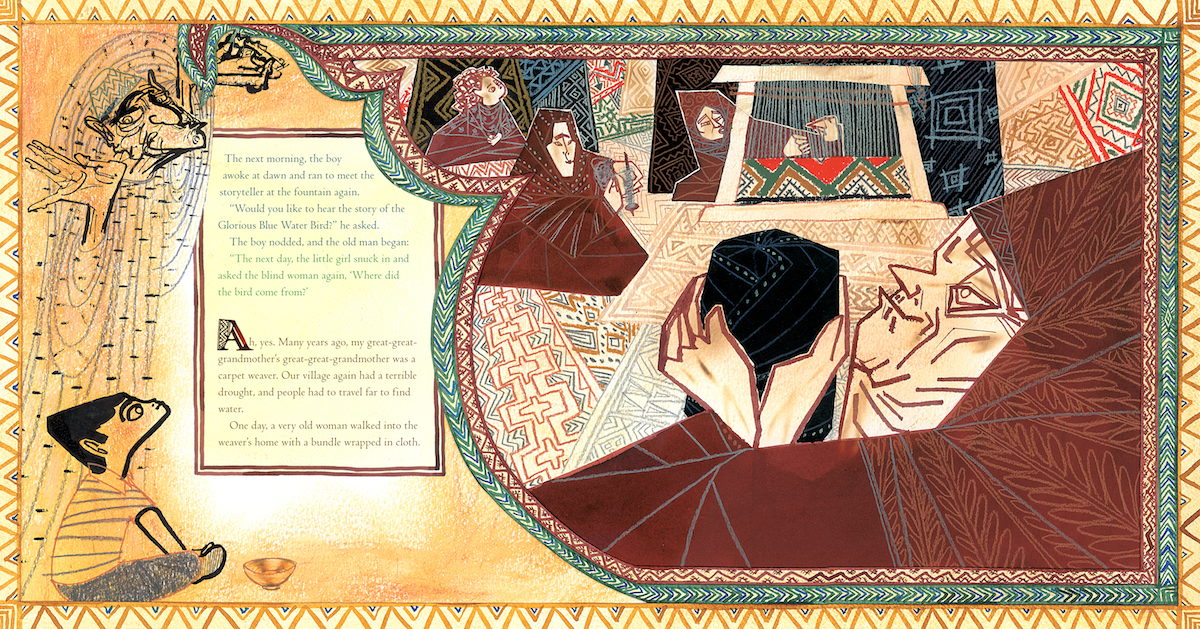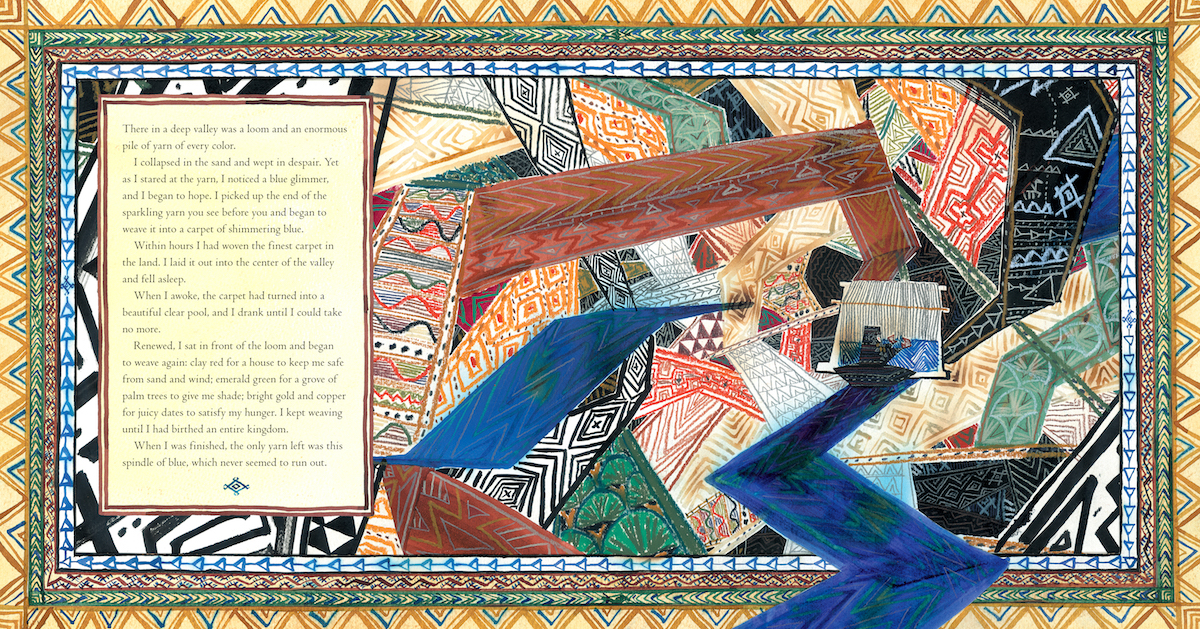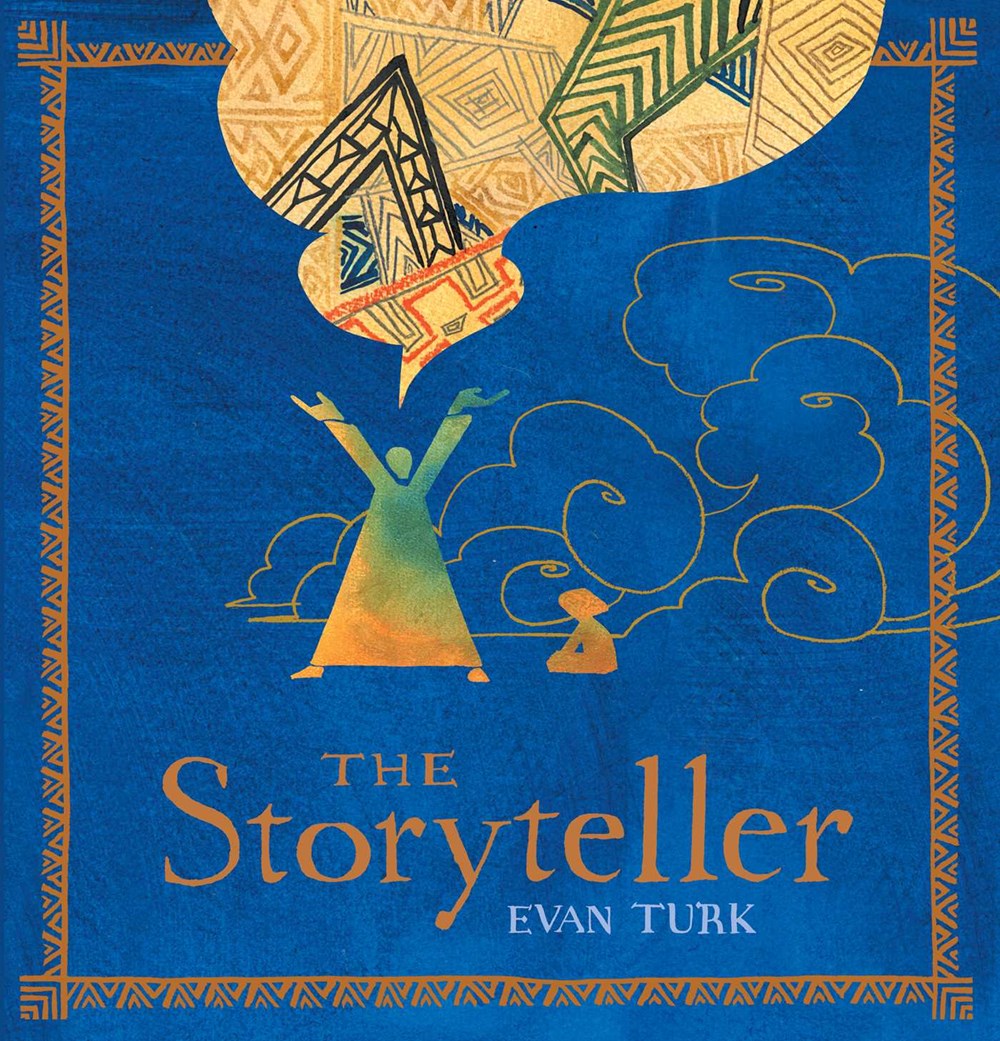Share this Post

The world will forever be hard-pressed to find a more beautifully-illustrated folk tale now that we have all seen Evan Turk’s The Storyteller.
Long, long ago, the Kingdom of Morocco formed at the edge of the great, dry Sahara. It had fountains of cool, refreshing water to quench the thirst of the desert, and storytellers to bring the people together.
But as the kingdom grew, the people forgot the dangers of the desert, and they forgot about the storytellers, too.
All but one young boy…
Aside from the first spread—which sets the scene for us—almost every page is full of golds and browns, emphasizing the dryness of the surrounding desert in which the boy and his village live. Water is scarce, and any time we see water in the illustrations it immediately stands out. This makes sense, of course, in terms of color theory because blue and orange are opposite each other on the color wheel. But in this particular case the blue does something more. It provides a beacon of hope in an otherwise bone-dry scene.
When the boy is finally endowed with the ability to bring water to his village, we see the entire color scheme and tone of the book shift. Blues spread across the ages to take over the oranges, but we also see a notable change in the villagers themselves. No longer weighed down by their lack of water, we see their spirits rise and become jovial.
Colors are key in The Storyteller not only to convey tone, but also to differentiate between narrators. With multiple storytellers, Evan cleverly color-codes each story so that we as readers can delve further and further into each world and still know which story is being told. Evan changes the color of the text depending on the narrator, but even more notable are the borders of each spread, which also change depending on the story:
The Sandstorm and the Storyteller: Golden Yellow,
The Endless Drought: Green,
The Glorious Blue Water Bird: Brown,
and The Miraculous Yarn: Black.
Even more incredible is that, as the stories progress, the borders evolve, too: what was once a yellow border suddenly has splashes of blue when the boy gets his first cup of water. By the end, the borders are entirely blue! The fabric of each narrative gradually begins to intertwine with the others, especially in the borders: as each of the stories progresses, we see where the stories begin to intersect with one another, demonstrating how stories naturally weave together to give listeners a full picture.
Evan’s illustrations were highly influenced by patterns he saw created by the carpet weavers in Morocco, and it’s evident in almost every aspect of the illustrations, borders included. Evan recently wrote about the borders here, and I highly recommend checking out his site to learn about the shapes we see in the borders themselves (because in this book, everything means something!).
I can’t possibly touch on all of the design elements that Evan utilizes in his illustrations. The Storyteller is a book to read and experience over and over again, and it’s a book that comes from something much larger than a simple desire to tell a story. The Storyteller speaks to the very heart of what stories are and the power they have to change the people who experience them.
Check out our ALL THE WONDERS of The Storyteller post for more on this beautiful tale, including an exploration of how author-illustrator Evan Turk began his storytelling journey, a survey of programs around the world working to preserve the traditions of storytelling, and a craft that will help you tell your own stories for years to come.


